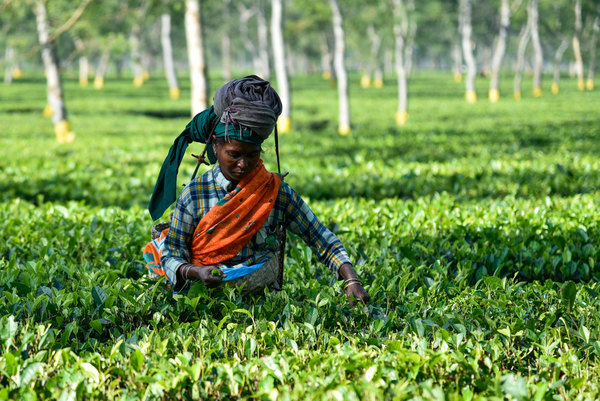Climate change to cause more diet related deaths
A young man in drought conditions in Ethiopia (Author: USAID African Bureau) We are all told to improve our diet; increasing our fruit and vegetable consumption and reducing our red meat intake. But a new study, ‘Global and regional health effects of future food production under climate change; a modelling study,’ published in The Lancet…
Author of the Month Blog: Mason’s World Encyclopedia of Livestock Breeds and Breeding, Valerie Porter
A tall, spare, bearded, lively, modest, quietly humorous and gentle man, the animal breeding consultant Ian L Mason was known and respected worldwide for his encyclopaedic and authoritative knowledge of livestock breeds and breeding. It was said of him by a friend in Israel: ‘It is known in Asia that Dr Mason has a beard,…
Sustainable future depends on women
Today, on International Women’s Day, we celebrate the social, economic, cultural and political achievements of women, while calling action for gender parity. The United Nations campaigns for “Planet 50-50 by 2030” referring to the sustainable development goals (SDGs) that are to be achieved in the next 15 years. The goals urge us to, for example,…
Promoting improved nutrition practices for women
Ahead of International Women’s Day on 8 March, Charlotte Jordan looks at how CABI is helping to promote improved nutrition practices among women in 12 developing countries. One in three people in developing countries suffer from ‘hidden hunger’ or micronutrient deficiency. It’s a major cause of illness, poor growth, reduced productivity and impaired cognitive development.…
Why is Aedes so good at being a vector?
Seeing the Zika virus epidemic in South America it is hard to believe that just 50 years ago the Aedes mosquitoes that spread it and several other tropical diseases were nearly eliminated in that region. Ever since then it seems we have been going backwards in mosquito control. Aedes aegypti seems to be adapted to…
Author of the month blog: The Animal Trade, Clive Phillips
About four years ago, I started to get concerned that the full impact of expansion and intensification of the animal production industries worldwide was not understood, by those in power, by scientists and definitely not by the public. The relatively rapid introduction of intensive farming systems over the last fifty years, and their widespread adoption…
With its finger on the pulse …
2016 is the UN Food and Agriculture Organization (FAO) Year of Pulses The Africa Soil Health Consortium (ASHC), a CABI managed project, is working to support partners to improve their communications to farmers and improve soil fertility in sub-Saharan Africa. Since the outset, this has involved working with projects that encourage smallholder farming families to…
Tree–crop interactions: agroforestry in a changing climate
Twenty years after the first edition of the standard book on tree–crop interactions, edited by Peter Huxley and Chin Ong, we now have a second edition. The second edition has explicit attention to climate change, with chapters on microclimate effects and consequences for the various terms of the water balance. The primary strength of the…
EU dairy industry outlook following the abolition of milk quotas
By Miroslav Djuric, DVM, CAB International, Wallingford, UK. Milk is the EU's number one agricultural product in terms of value, accounting for approximately 15% of agricultural output with approximately 148 million tonnes of cow milk produced in 2014. The dairy sector is also of significant economic and social importance in the EU, with over 650,000…
Four new bee species described in Australia – many more remain unidentified
By Miroslav Djuric, DVM, CAB International, Wallingford, UK. Bee specialists from South Australia have described four new native bees. Three of these bee species have been described as having narrow faces and very long mouths, allowing them to feed on slender flowers found on the emu bush, a hardy native of the Australian desert environment,…


